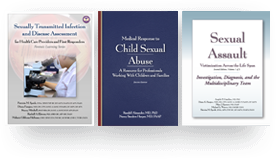Elder Abuse
An Overview of Elder Abuse
Among victims of interpersonal violence, older adults (generally, those 65 or older) have historically been overlooked. In recent years, though, efforts to understand, create interventions for, and prevent elder abuse have been increasing.
Similarly to other forms of interpersonal violence, violence against older adults can include physical abuse, psychological abuse, sexual abuse, neglect, and financial abuse. Neglect and financial abuse are particularly prevalent forms of abuse that are leveled against the aging population. Financial abuse of older adults may include but is not limited to acts such as withholding or stealing funds and social security benefits, denying them access to their accounts, and mismanaging funds (eg, neglecting to pay bills). Neglect includes the ignoring of or refusal to meet the needs of an older adult in one’s care. This may include failure to provide an older adult with appropriate food, bathroom access, medication, social interaction, or emotional support.
The Impacts of Elder Abuse
Much like any other form of abuse, elder abuse can span a wide range of severity and impact. This can occur on both long- and short-term scales. At the most severe levels, victims may succumb to injuries or other effects of their abuse. In addition, they may have compounding experiences that ultimately lead to premature death. Less severe abuse still has lasting implications that can affect a victim’s quality of life for years to come. The impacts of elder abuse commonly manifest in:
Depression
Physical injury
Physical decline
Mental decline
Financial ruin
Deterioration of interpersonal relationships

Signs to Watch For
There are a number of ways that abuse may present itself—some more overt than others. These signs may include:
Consistently appearing unkempt or disheveled, with poor hygiene
Having fearful or withdrawn behavior
Marks such as scratches, cuts, or bruises that are not easily/well-explained
Unusual lack of payment for financial obligations
Missing any care or mobility items that are typically necessary for that individual
Poor living conditions
Risk Factors
Elder abuse can come from any trusted person or acquaintance in an older adult’s life. However, there are a number of factors that may put an older person at greater risk of being abused.
An older person’s medical history may contain a great deal of information as to how likely they are to experience abuse. If an individual has a history of ongoing physical or mental health problems that require consistent care or aid, they are more likely to be abused. This is especially relevant with problems such as Alzheimer’s or dementia. This may involve medical abuse, with mistreatment stemming from health care professionals. It may also be abuse from a caretaker, such as a relative or nursing home employee.
Another significant risk factor for elder abuse is a history of violence. A history of violence as a risk factor applies both if the older person has previously been a perpetrator of violence and if they have been a victim of violence. In instances where an elder has been a perpetrator of violence against their spouse or child who is now their caregiver, the caregiver may resent the person they are taking care of. They then may use their current power over the older person to get back at them for their previous abuse. When an older person has previously been a victim of violence, their vulnerability comes from a learned helplessness. This increases their chance of continued victimization.
Additional Risk Factors
Other risk factors include caregiver stress—which can be the result of financial strain, strain on time, and difficulties associated with providing appropriate care to an older person—and living in an institution. Living in an institution, as opposed to independently or with family, is a major risk factor for abuse because of the number of sources from which abuse can originate. This may include other residents, institution employees, medical practitioners, and relatives. Depending on how an institution is run, it may be difficult for administration or upper-level staff to identify elder abuse when it occurs. They may also dismiss it as “normal” conflict among residents or between residents and staff.
Prevention and Intervention
Because the focus on elder abuse is still in its infancy, there are very few standardized approaches to dealing with the issue. Current recommendations for preventing elder abuse focus heavily on ensuring that caregivers have the resources they need to adequately care for their loved ones while still maintaining their own mental and physical wellbeing. Resources like the National Respite Locator Service may be helpful in a caregiving situation.
Where intervention is concerned, it is recommended that medical practitioners and other professionals that often come in contact with older adults be trained on how to recognize elder abuse when they see it. Having the tools to confidently identify an abuse situation makes it more likely that older adults experiencing abuse will be able to get the help and support that they need.
Suspect a Case of Elder Abuse?
If you believe that you or someone you know may be a victim of elder abuse, call Adult Protective Services (state contacts can be found here).
Additional Learning
If you want to learn more about elder abuse and other forms of interpersonal violence, keep an eye out for STM Learning’s forthcoming release, Gender-Based Violence Across the Continuum: Trauma-Informed Care.
This blog was written by STM Learning’s editorial staff for educational purposes only. It is not intended to give specific medical or legal advice. For expert information on the discussed subjects, please refer to STM Learning’s publications.







